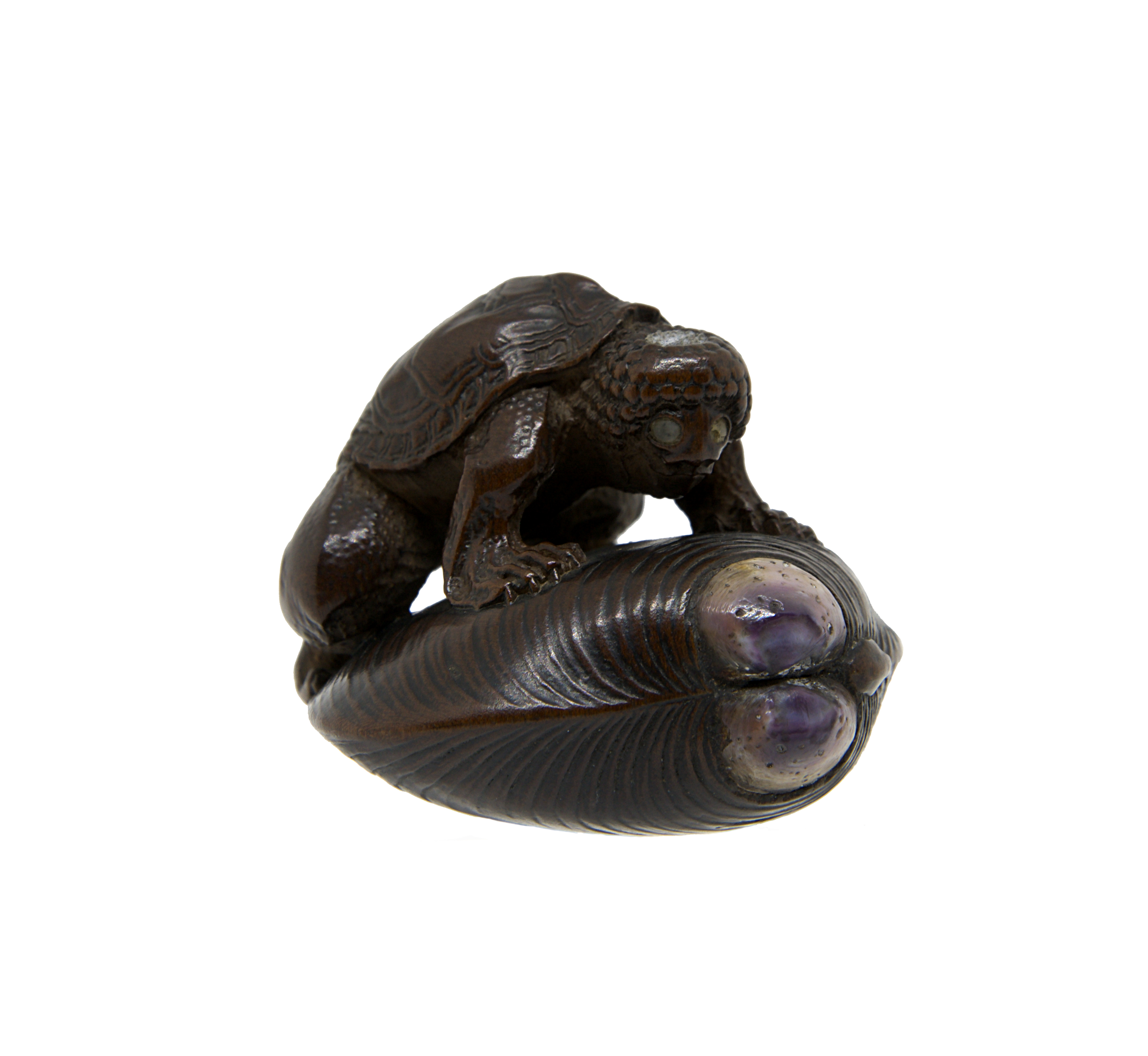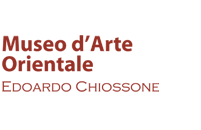
Click here to view image
Komin, Japan, second half of 19th century
Netsuke, men's clothing accessory
Patinated and engraved wood, eyes, inlaid with shell, ivory, pewter, 3 x 4 cm
Kappas are creatures from Japanese mythology that inhabit lakes, rivers, and ponds. They are described as child-sized humanoid beings with turtle-like shells and scaly skin ranging from green to yellow. They have webbed hands and feet that help them live in an aquatic environment. The kappa's main feature is a cavity on its head filled with water; however, this is also its main weakness: if the water were to spill it would risk death.
In our netsuke a kappa is firmly resting on a hamaguri shell: a hind leg of the creature is stuck inside between the two valve, from which the mollusc can be seen spilling out, made in ivory. The junction of the hamaguri is made of shell, while the cavity on the head is made of pewter. The signature of the author, Komin, is inserted within a gilded rectangle at the base of the shell, along with the seal (kakihan). Several other pieces with the same subject and signed by Komin are well known.




